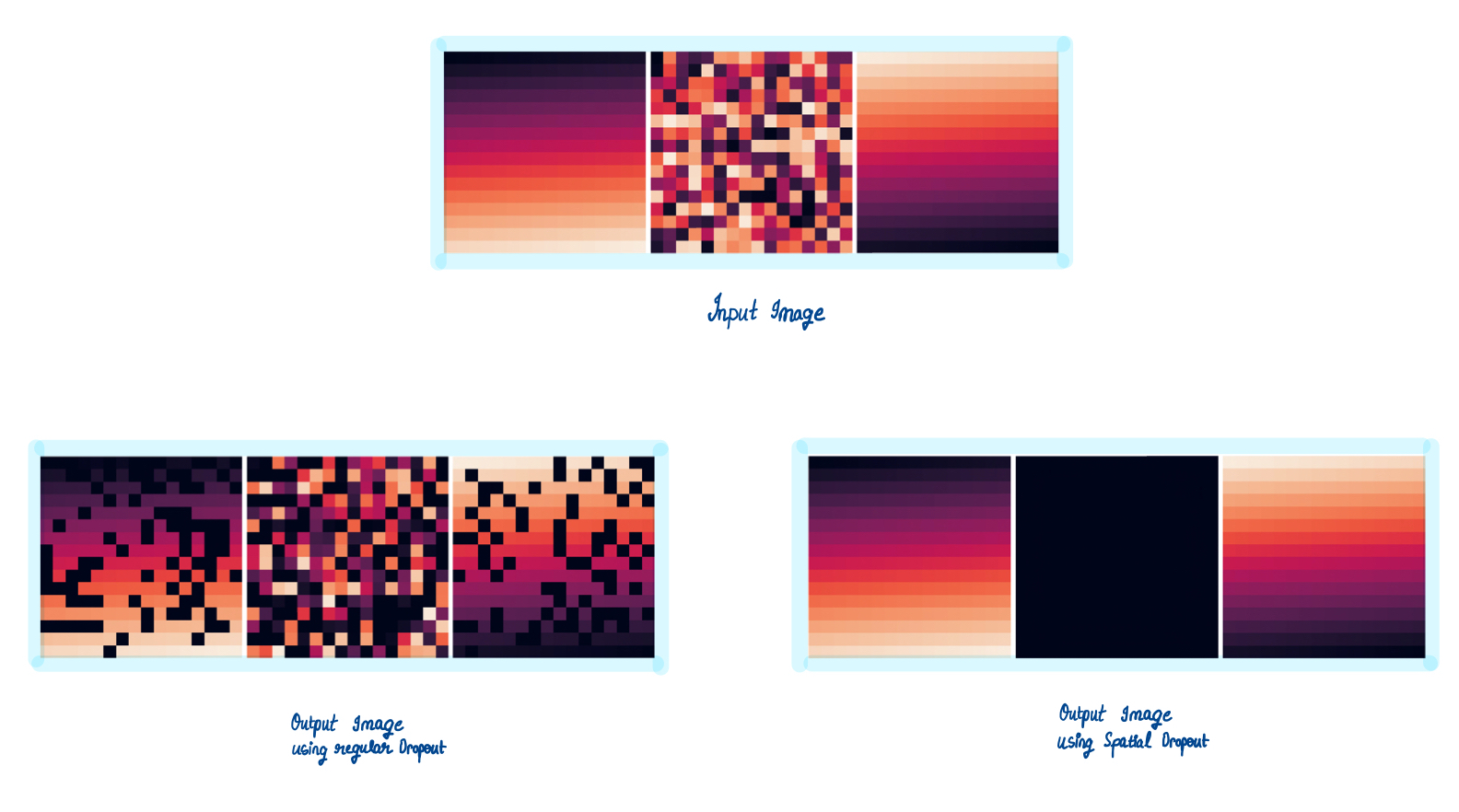Week Eight

A lot of stuff happened this week. I will try and describe the interesting parts here. Starting with the picture above. I saw the movie Birds of Prey and the Emancipation of Harley Quinn. Its a pretty fun watch, especially if you are into superhero stuff.
I had mentioned last week, that I will try to complete the Spatial Dropout layer this week, which might spill over into the next week. However, I was able to very quickly understand about the layer, once I did some visualisation experients. Previously, I only knew about what the Dropout layer does, not how it does it. After going through the code written by zoq for the dropout layer, and reading up on some slides from CS 231n, I understood that in practice, dropout can be implemented in two ways, and that one of the more common ways is to use inverted dropout. Including screenshots of the slides below for easy reference.

Method 1 : Scaling the Activation at test time.

Method 2 : Inverted Dropout
Once I understood this, the logical next step was to visualise the difference
between Spatial Dropout and this regular Dropout. In PyTorch,
nn.Dropout(p) correponds to the regular Dropout and nn.Dropout2D(p)
corresponds to Spatial Dropout. Using those 2 methods of PyTorch, and with the
help of some matplotlib and numpy, I came up with the following. I took a single
image with 3 channels and passed it through each of the 2 layers separately. All
the code used for visualisation can be seen here.

As we can clearly see, regular dropouts randomly drops out input pixels across the channels, whereas spatial dropout drops out an entire channel with the probability p. This feature of spatial dropouts helps to improve performance when activation maps are highly correlated with each other, as can be seen in the kernels learnt by the initial few layers of any CNN.
Let’s see how the code for the Forward() method will be different for each of
these 2 layers when implemented in mlpack. (Assume the model is in training
mode, for the following code segments)
1
2
3
4
5
6
7
8
9
10
11
12
13
14
15
16
17
18
19
20
21
22
23
24
25
26
27
// Regular Dropout
mask = arma::randu<arma::Mat<eT> >(input.n_rows, input.n_cols);
mask.transform([&](double val) { return (val > ratio); });
output = input % mask * scale;
// Spatial Dropout
size_t batchSize = input.n_cols;
size_t inputSize = input.n_rows / size;
double scale = 1.0 / (1.0 - ratio);
arma::cube inputTemp(const_cast<arma::mat&>(input).memptr(), inputSize, size,
batchSize, false, false);
arma::cube outputTemp(const_cast<arma::mat&>(output).memptr(), inputSize,
size, batchSize, false, false);
arma::mat probabilities(1, size);
arma::mat maskRow(1, size);
arma::mat mask;
probabilities.fill(ratio);
BernoulliDistribution<> bernoulli_dist(probabilities, false);
maskRow = bernoulli_dist.Sample();
mask = arma::repmat(maskRow, inputSize, 1);
for(size_t n = 0; n < batchSize; n++)
{
arma::mat& inputImage = inputTemp.slice(n);
arma::mat& outputImage = outputTemp.slice(n);
outputImage = inputImage % mask * scale;
}
Similarly, let’s also compare the Backward() methods of each.
1
2
3
4
5
6
7
8
9
10
11
12
13
14
15
16
17
// Regular Dropout
g = gy % mask * scale;
// Spatial Dropout
g.zeros(arma::size(input));
arma::cube gyTemp(const_cast<arma::mat&>(gy).memptr(), inputSize, size,
batchSize, false, false);
arma::cube gTemp(const_cast<arma::mat&>(g).memptr(), inputSize, size,
batchSize, false, false);
for(size_t n = 0; n < batchSize; n++)
{
arma::mat& gyImage = gyTemp.slice(n);
arma::mat& gImage = gTemp.slice(n);
gImage = gyImage % mask * scale;
}
With this comparison out of the way, I am sure that the difference between the two types of dropout, in terms of their implementation and also the use cases for each has been established sufficiently clearly. The code snippets above have been organised into complete files in my repository, where the outputs from PyTorch can be verified to be exactly same as the one from the mlpack implementations I provide above. Thus, the Spatial Dropout layer is complete in terms of development.
For the second phase of coding, I had planned to do 3 layers.
-
Instance Norm
-
Pixel Shuffle
-
Spatial Dropout
And I have completed the basic implementations for all of them, and provided the code for that in the repository I linked above along with visualisation notebooks and code to prove correctness by comparing with PyTorch outputs of same functionalities. I have also written extensive blog posts explaining the working and the correctness of each. I will be formalising these into 3 distinct PRs over the next couple of weeks, while I start working with the mlpack-TensorFlow translator.
With that out of the way, I would like to show you something that I painted this week. Remember the KPop group I was obsessing over last week? I tried painting one of my favorites from the group. Do note that I am not very good at painting stuff, but I tried my best and I am happy with the final results, as it looks exactly how I wanted it to.

BLACKPINK Lisa
Coming to song recommendations for the week, I binged a lot of songs from The Chainsmokers this week, along with some Maroon 5. Here is one of them randomly picked from the list.

Nobody's Love by Maroon 5
See you next week!
XOXO
